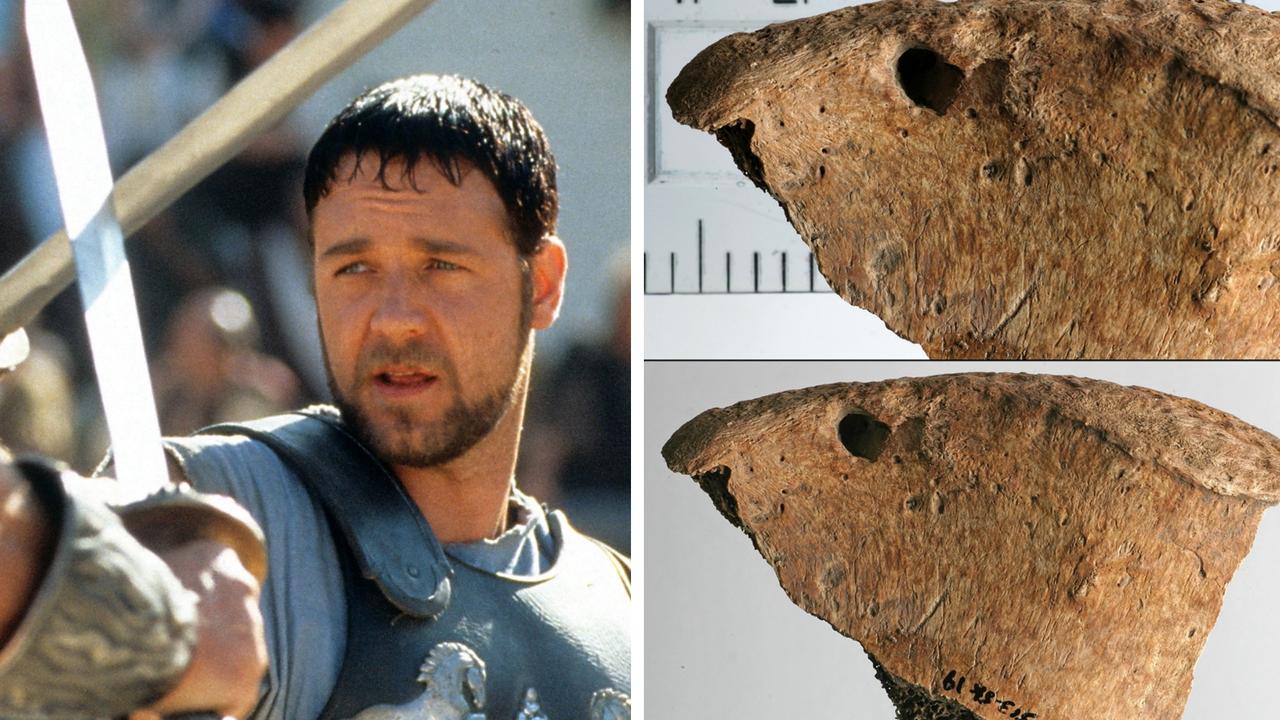‘Transfer hundreds of vehicles ashore’: China’s invasion barges seen practising for war
Censors swiftly removed the material in Beijing, but Western satellite images have confirmed the concerning test run in southern China.
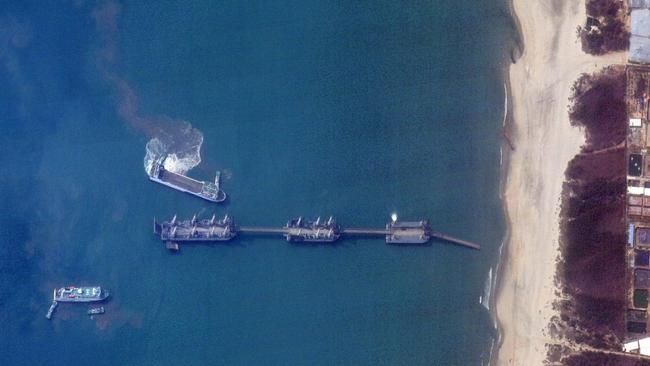
World
Don't miss out on the headlines from World. Followed categories will be added to My News.
China’s new invasion barges are practising for war. And its civilian ferries are joining in.
Footage and photos posted to Chinese social media have revealed an unusual rehearsal for invasion.
The material was quickly taken down by Beijing’s censors. But satellite photos have confirmed the sinister test run in China’s southern Guangdong Province.
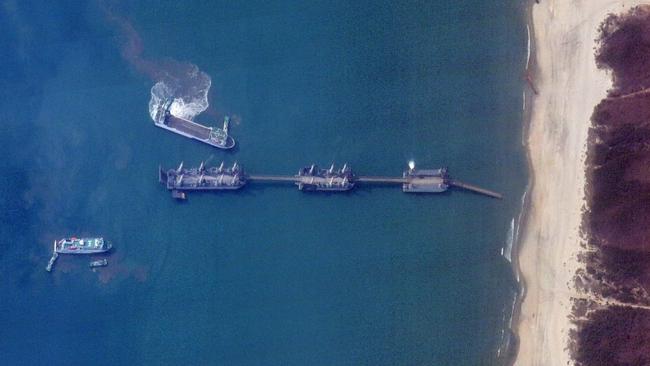
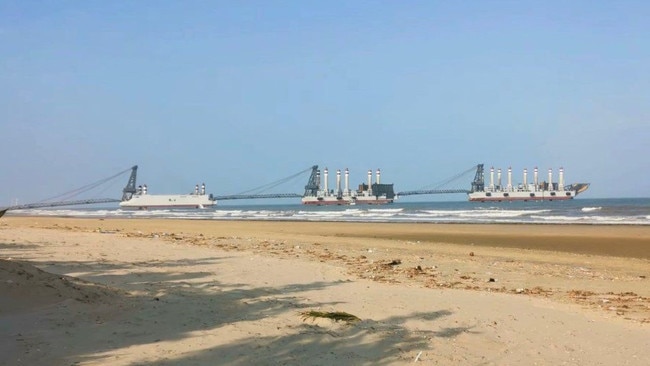
It shows three strange new barges and a commercial ferry close to shore.
The barges have one job.
And that’s to provide an instant bridge between deep water and the shore.
The drive-on and off ferries have two jobs.
They already offer a shortcut for civilian cars and commercial trucks across China’s broad waterways. But the ships have been built to military specifications to carry tanks, armoured personnel carriers, and missile launchers at the drop of a hat.
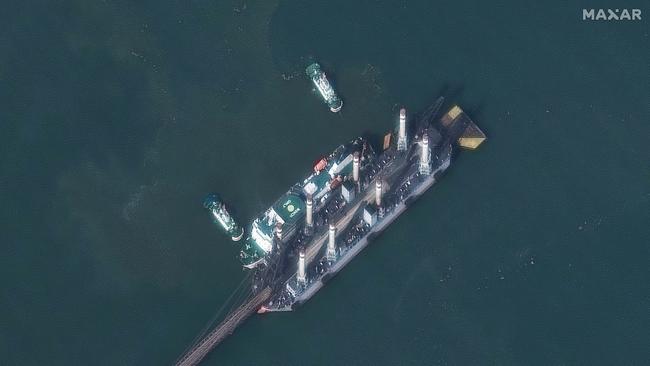
Put the two together, and you get an instant invasion beachhead.
“This newest logistics capability is further evidence of the PLA’s efforts to meet Chairman Xi Jinping’s reported mandate to have military capabilities necessary to conduct a large-scale invasion of Taiwan by 2027,” a new US Naval War College assessment reads.
Built to Purpose
Communist China insists Taiwan is a breakaway province. But Chairman Mao Zedong’s revolution never conquered the island. And the incumbent authoritarian Nationalist government has since evolved into a self-ruled democracy.
Chairman Xi Jinping, however, has repeatedly reiterated vows to finish the job.
The authoritarian leader, now in his constitution-breaking third term, insists he wants Taiwan reunited with the mainland through peaceful negotiation.
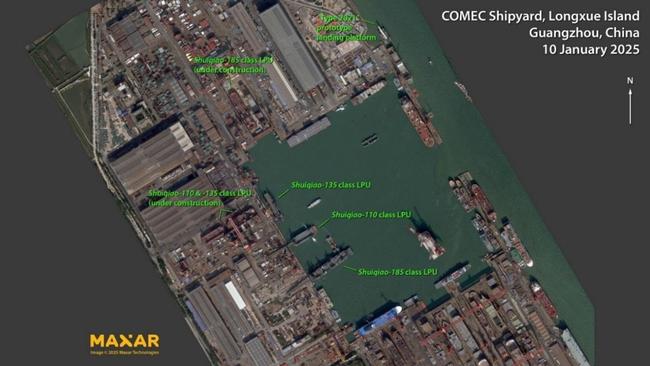
If that fails, he insists force will be the inevitable alternative.
And that’s what the barges are all about.
But they’re just one element in a rapidly expanding force of seabed cable cutters, swimming tanks, long-range fighters and heavy bombers being amassed by Beijing to stare down its cross-strait rival.

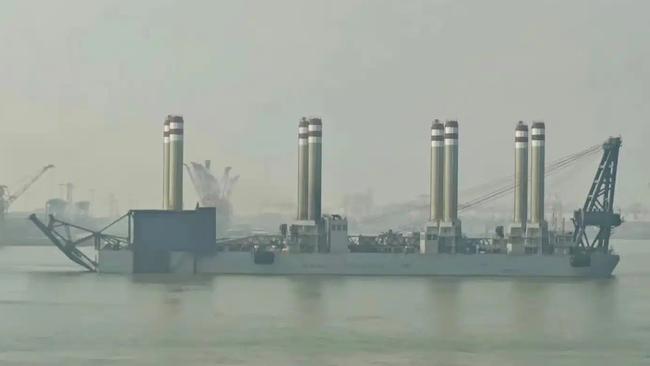
Combat jets and warships now circle Taiwan almost daily. And almost every new “war game” is larger and more complex than the previous one.
These single-purpose barges are joining them.
Three Shuiqiao-class barges, all of which have been built within the past year, have been seen linked together to provide a stable platform.
The lead barge has extended its bridge onto the shore.
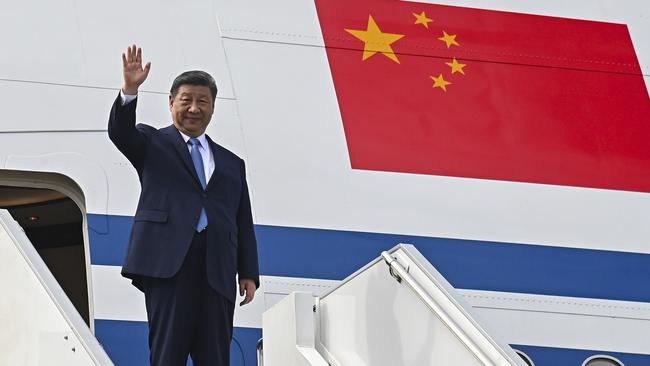
The end barge has connector ramps deployed to take cargo and vehicles off a ferry docked alongside.
The three-barge arrangement is about a kilometre long. And that means more Taiwanese, East and South China Sea beaches can become potential bridgeheads for an invasion force.
Rapid Deployment
Three of the bridgehead barges are known to be active. At least three more have been seen in an advanced stage of construction.
And dozens of ferries have reportedly already been built to military standard.
Their sudden appearance shows China has learnt a lesson from a failed attempt by the US military to deploy a floating pier in 2024. Touted as a fast-track for relief supplies to enter war-ravaged Gaza, it collapsed after just 20 days of operations.

China’s barges have retractable pylon stilts that lift the vessel above the waves for extra stability. And the interlocking platforms and ramps provide stable platforms onto which ferry-carried vehicles can disembark.
“China’s Shuiqiaos are not a panacea that can overcome all difficult landing conditions, but they definitely provide PLA planners with more options along greater stretches of Taiwan’s coastline,” argues Professor of Strategy Andrew Erickson.
“Beyond a formerly narrow set of favourable beaches, they put many more landing sites into the realm of possibility and open up a broader range of landing options.”
Troubled Waters
Taiwan’s coastline is notoriously rugged. It has only 20 beaches suitable for shallow-hulled assault craft to run ashore. These have long since been studded with steel spikes, explosives and concrete obstacles. And Taiwan’s troops are well-practised in defending their terrain.
“This relocatable pier system can deliver large volumes of (personnel), equipment and material into unimproved amphibious landing areas, damaged or blocked ports, or possibly across seawalls or other obstacles onto coastal roads,” the War College assessment reads.
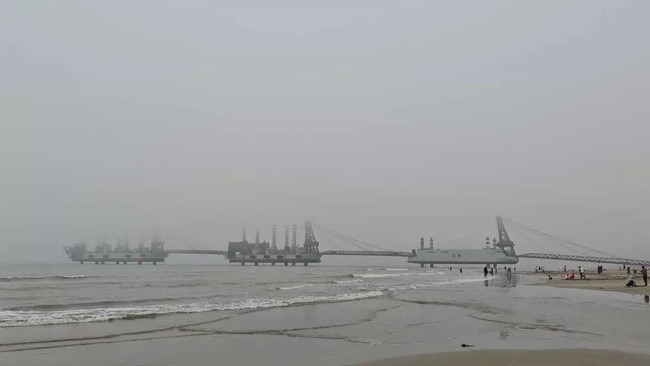
“With a total of five points at which to dock roll-on/roll-off (RO-RO) ships, the relocatable pier could potentially transfer hundreds of vehicles ashore per hour.”
Unlike the ferries they serve, the barges appear to have no civilian use.
“Based on their function, paint scheme and lack of automatic identification system (AIS) transmissions, the barges are very likely PLA Navy auxiliaries and not civilian vessels,” the report adds.
Path to Victory
The barge-ferry combination is unlikely to be at the spearhead of any invasion force.
That role will be for dedicated assault ships carrying helicopters and landing craft. Swimming tanks and armoured personnel carriers can storm a beach. Helicopters and aircraft can drop paratroops behind defender lines.
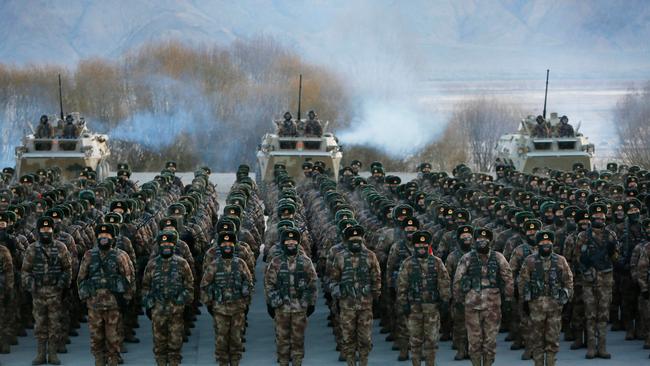
Analysts say the vulnerable barges and ferries are likely built to exploit territory already secured and defended by PLA marines and special forces.
“The Shuiqiao LPUs are another example of the PLA significantly increasing capabilities to conduct a large-scale cross-strait operation — if they are ordered to do so — in coming years,” the naval college report states.
“The Shuiqiaos are not themselves a game changer, but rather yet another component and indicator of relentless, comprehensive effort at improving capabilities and options for invading Taiwan,” concludes Dr Erickson.
“China under Xi would not waste resources of such a specialised, dedicated system if it were not bore-sighted on taking Taiwan by threat, or use, of force.”
Originally published as ‘Transfer hundreds of vehicles ashore’: China’s invasion barges seen practising for war




